

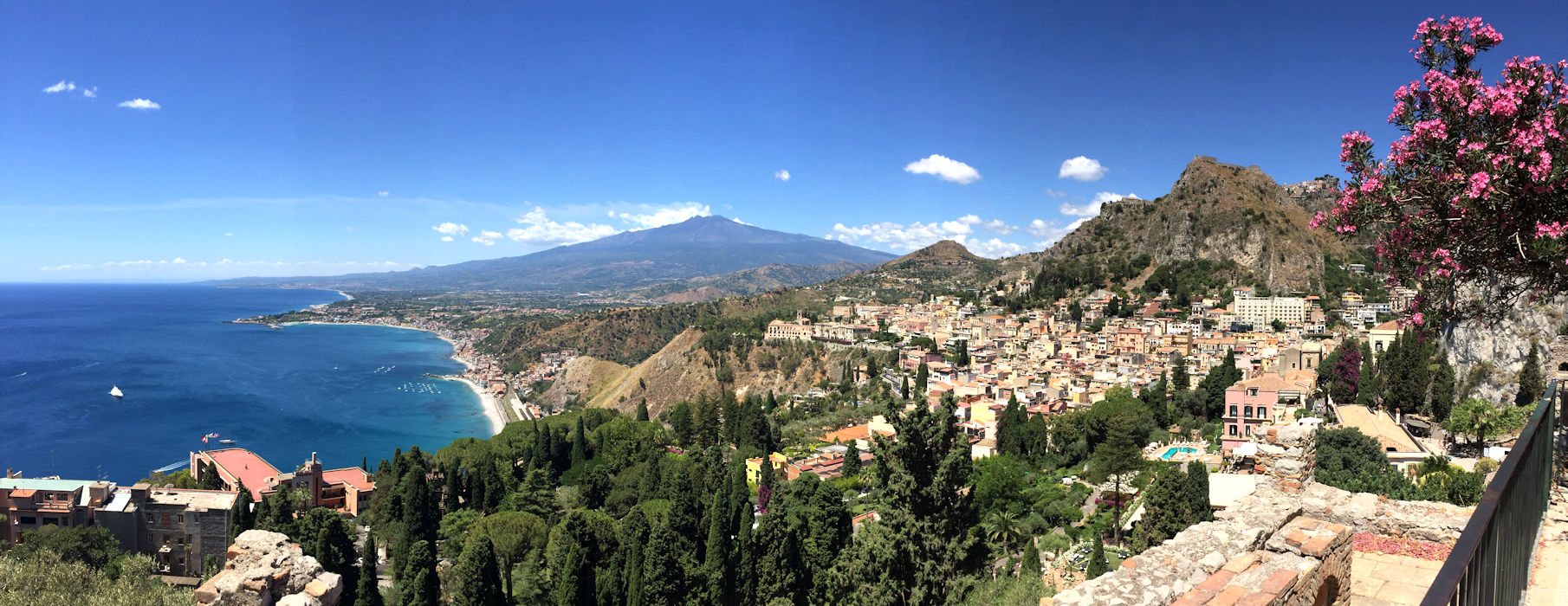
 uy de Maupassant in La Vie errante, 1885, writes:
uy de Maupassant in La Vie errante, 1885, writes: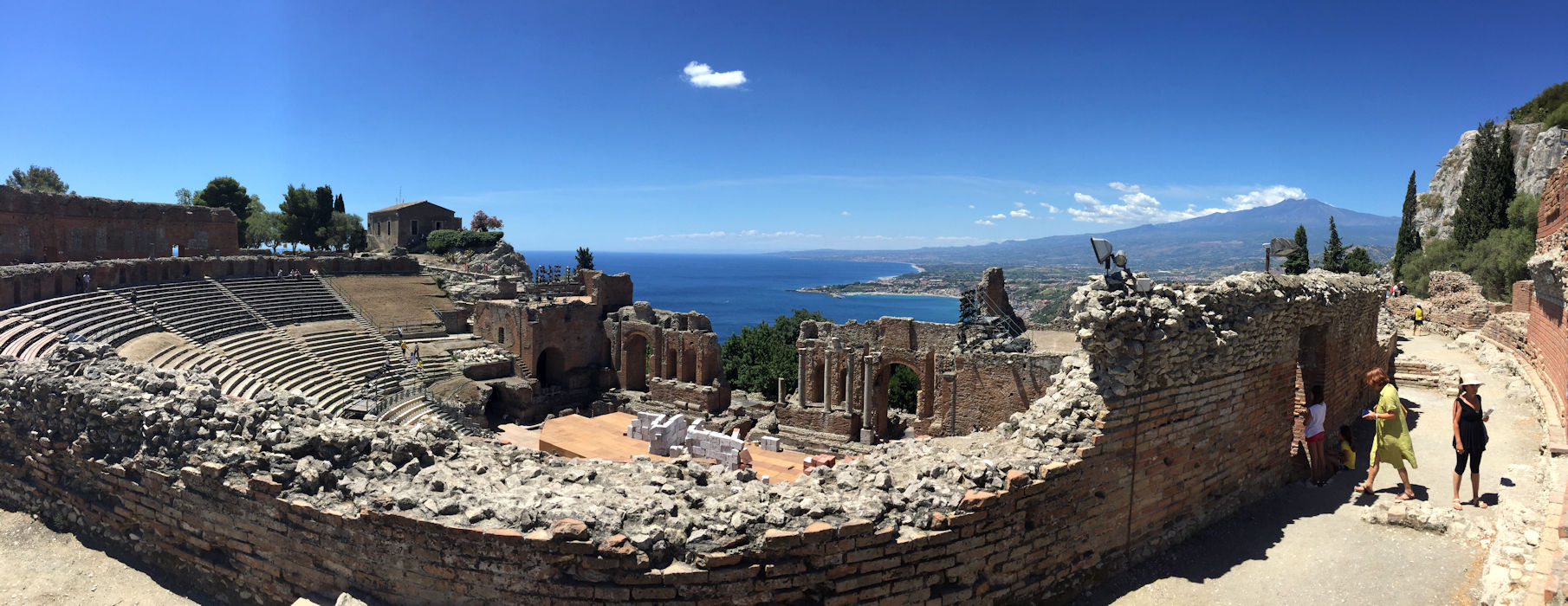
 aormina plays a fundamental role as one of the most important archaeological locations in Italy.
aormina plays a fundamental role as one of the most important archaeological locations in Italy.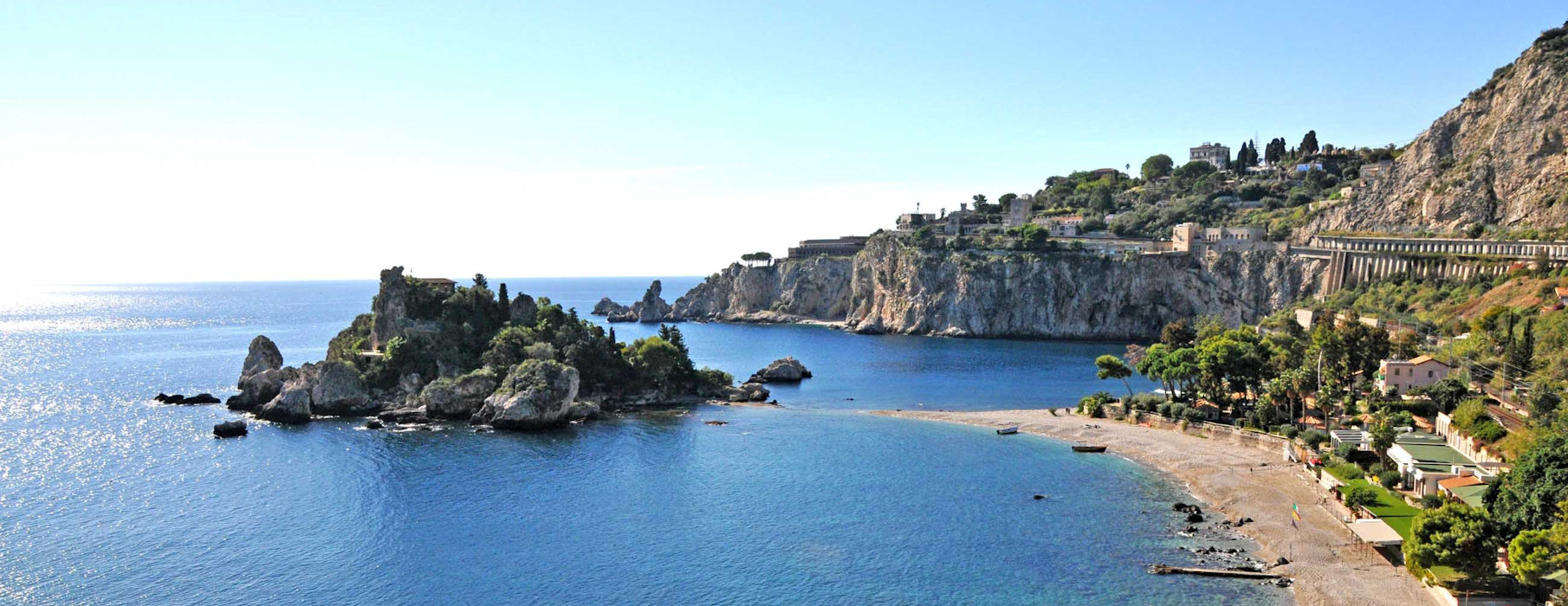
 rom the centre of town, a cable car connects Taormina to the spectacular beach of Isola Bella.
rom the centre of town, a cable car connects Taormina to the spectacular beach of Isola Bella.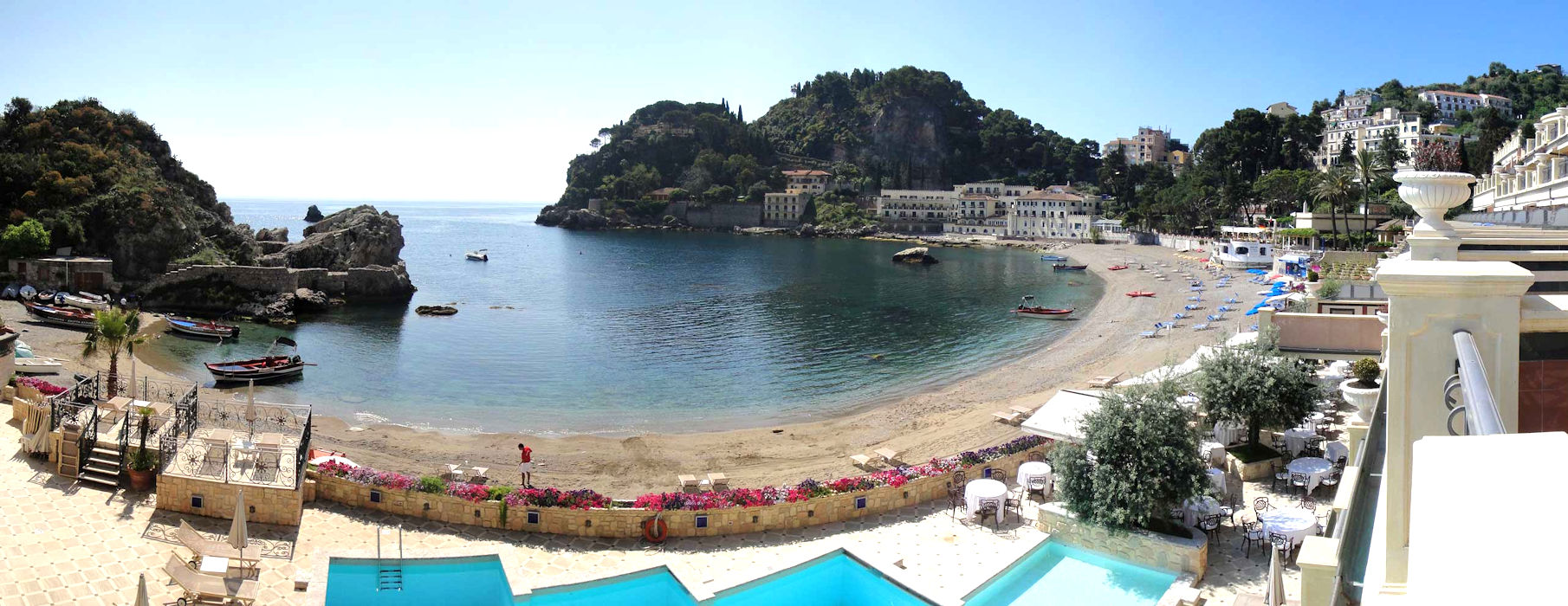
 he stunning small beach of Mazzaro' is set in a bay to the north of Isola Bella and is one of the most popular in the area.
he stunning small beach of Mazzaro' is set in a bay to the north of Isola Bella and is one of the most popular in the area.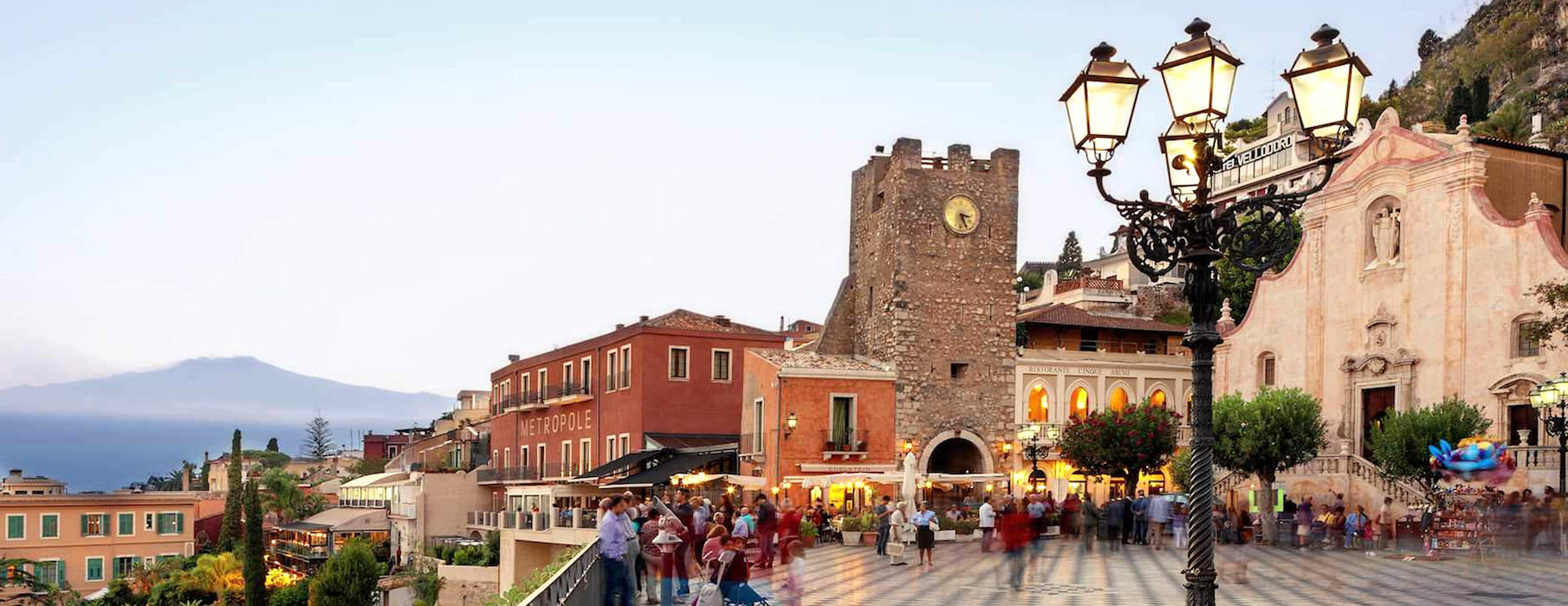
 bout halfway along Taormina's main drag of Corso Umberto is the town center, Piazza IX Aprile, a communal living room built as a terrace with a view over the Ionian sea from the railing bounding one side.
bout halfway along Taormina's main drag of Corso Umberto is the town center, Piazza IX Aprile, a communal living room built as a terrace with a view over the Ionian sea from the railing bounding one side. 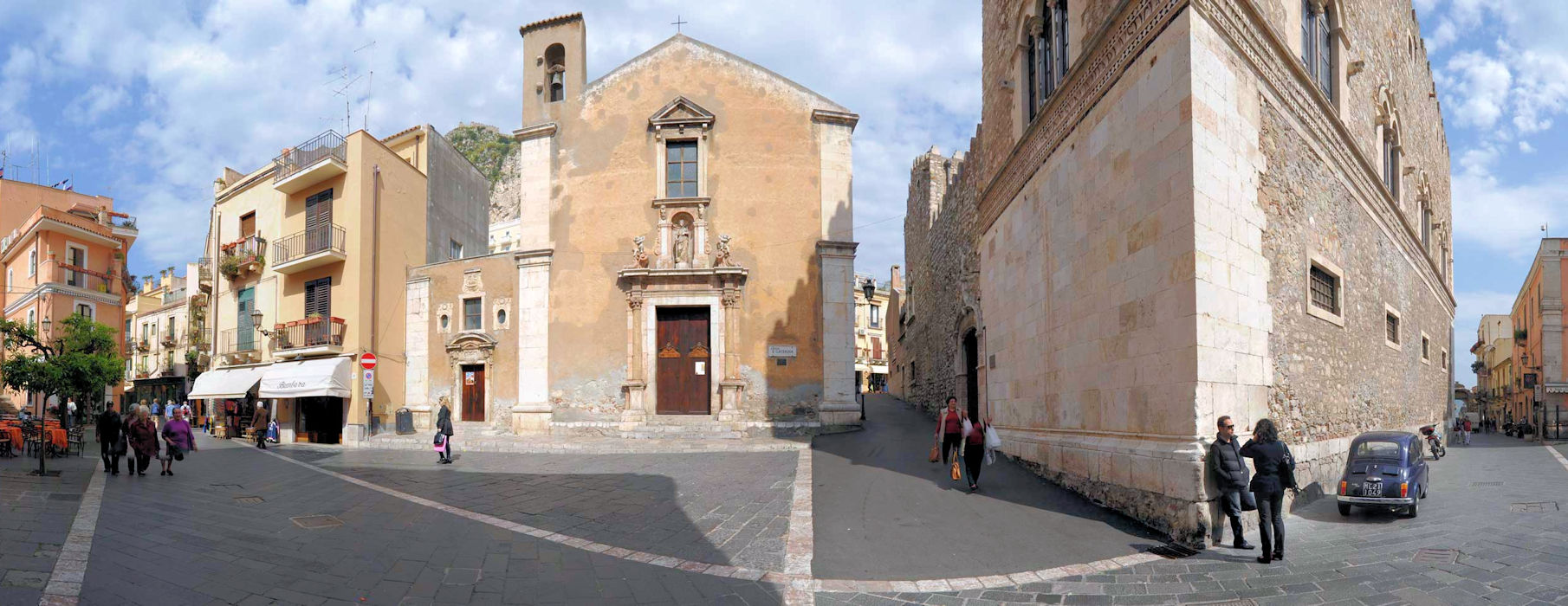
 alazzo Corvaja was originally built in the 10th century by the Arabs who then ruled Taormina, having conquered the town in 902.
alazzo Corvaja was originally built in the 10th century by the Arabs who then ruled Taormina, having conquered the town in 902.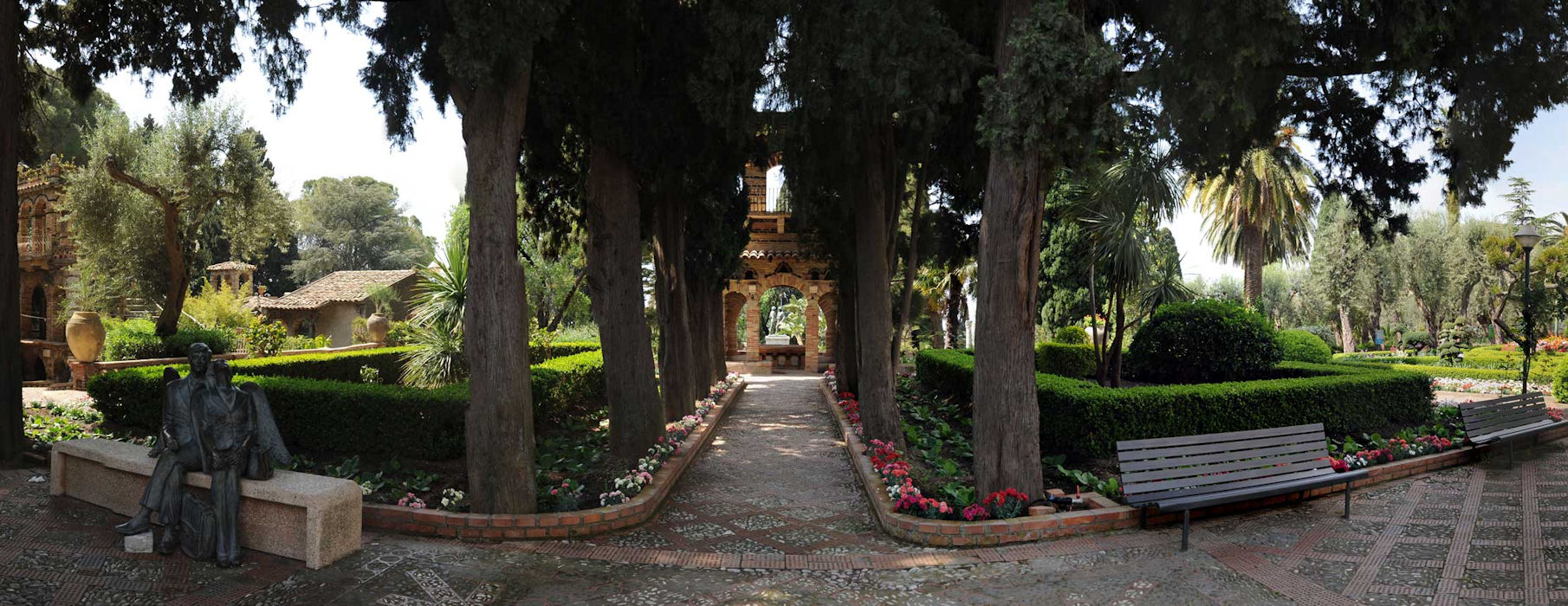
 arco Duca di Cesaro' is a real green lung, populated by lush vegetation of palm trees and a large quantity of flowers, that, in summer, make this place a delight for the eyes.
arco Duca di Cesaro' is a real green lung, populated by lush vegetation of palm trees and a large quantity of flowers, that, in summer, make this place a delight for the eyes.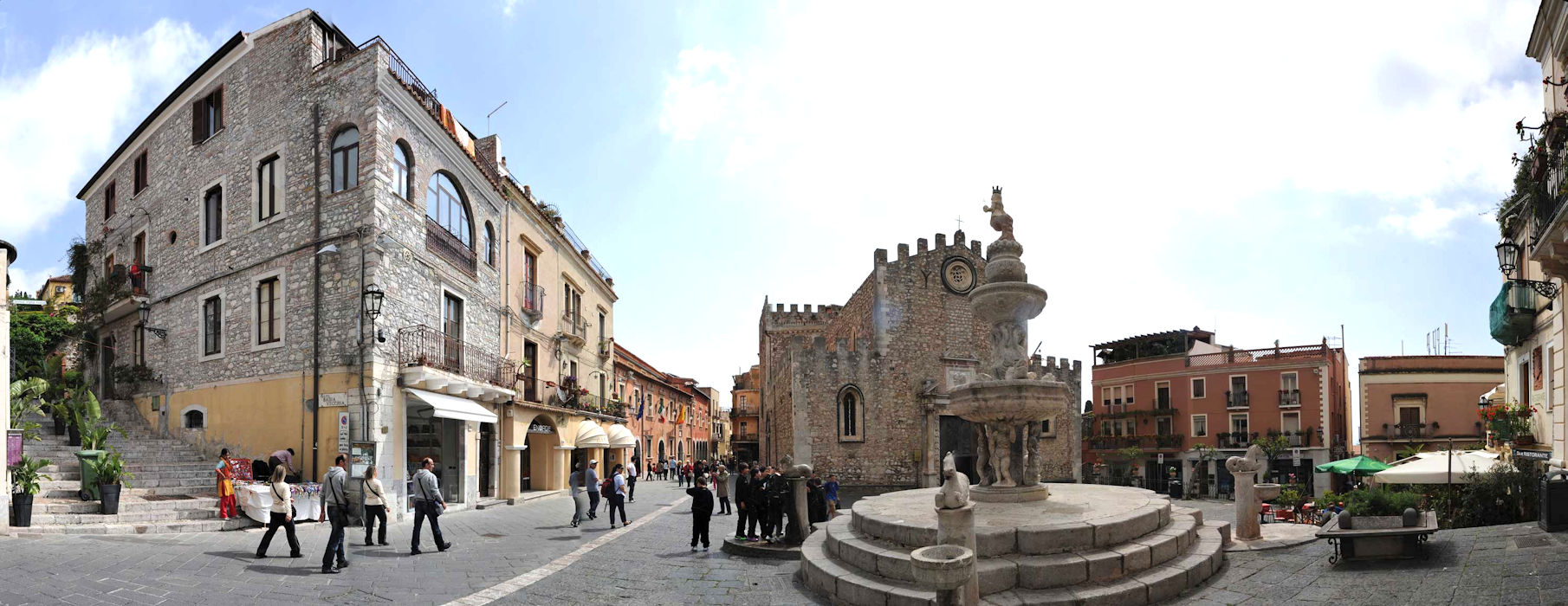
 n ancient times Taormina was protected by a circuit of walls with a triple fortification system. Traces of these walls can still be seen at the two furthest ends of the town where there are two entrances, commonly called Porta Messina and Porta Catania. Porta Messina, restored at the beginning of the 19th century, was named Porta Ferdinanda when it was opened in 1808 by Ferdinand IV of Bourbon. There is a tablet commemorating the occasion on the top of its arch. Porta Catania on the other hand is the end result of various changes and restorations, the last of which were performed in 1440 by the Aragonese. The Aragonese coat-of-arms sculpted in relief above the city coat-of-arms in the centre on the top part of the gate.
n ancient times Taormina was protected by a circuit of walls with a triple fortification system. Traces of these walls can still be seen at the two furthest ends of the town where there are two entrances, commonly called Porta Messina and Porta Catania. Porta Messina, restored at the beginning of the 19th century, was named Porta Ferdinanda when it was opened in 1808 by Ferdinand IV of Bourbon. There is a tablet commemorating the occasion on the top of its arch. Porta Catania on the other hand is the end result of various changes and restorations, the last of which were performed in 1440 by the Aragonese. The Aragonese coat-of-arms sculpted in relief above the city coat-of-arms in the centre on the top part of the gate.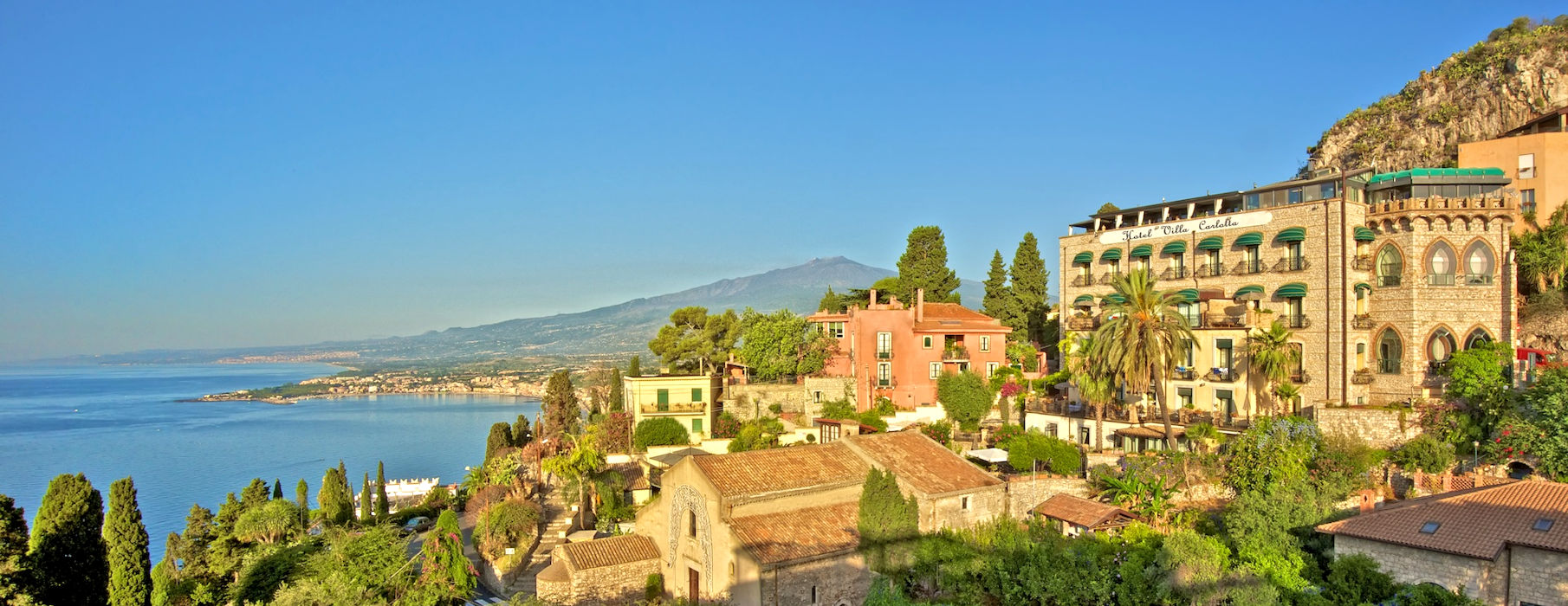
 he town of Taormina is perched on a cliff overlooking the Ionian Sea.
he town of Taormina is perched on a cliff overlooking the Ionian Sea.